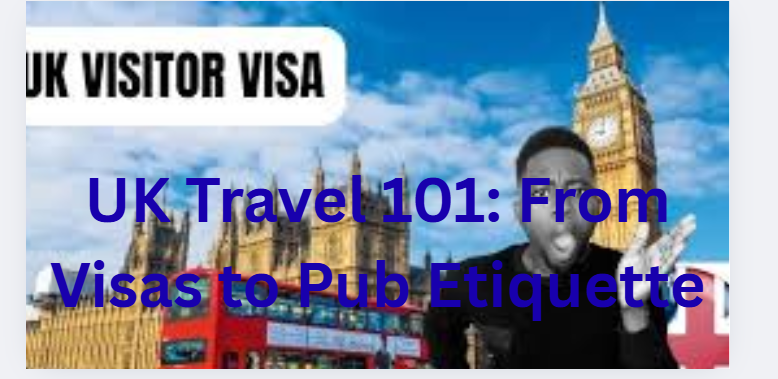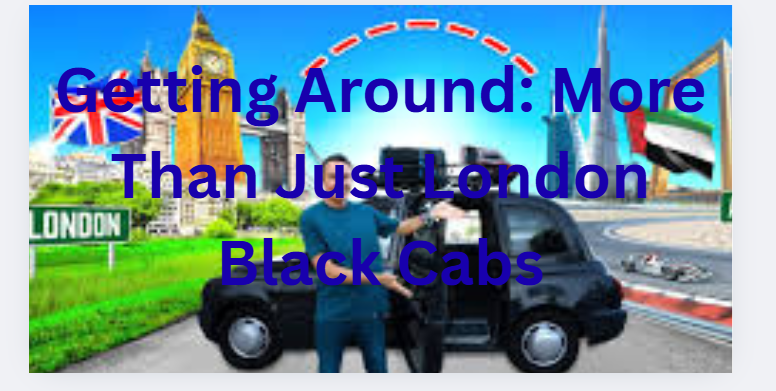
So, you’re planning a trip to the United Kingdom. Excellent choice. You’re about to explore a land of ancient history, stunning landscapes, and vibrant cities. But before you pack your bags and dream of castles and red phone boxes, there are a few practical things you need to know. Navigating the entry requirements and the unspoken social rules can be the difference between a good trip and a great one. This isn’t a dry manual; it’s your friendly guide to getting the basics right, from the official paperwork to the art of ordering a pint.
Getting Your Ducks in a Row: Visas and Entry
Let’s get the boring-but-essential part out of the way first. The UK is comprised of England, Scotland, Wales, and Northern Ireland, and your ability to enter depends on your nationality.
For many travellers, including those from the US, Canada, Australia, and the EU, you do not need a visa for short tourist trips (usually up to six months). You’ll just need a passport that is valid for the entire duration of your stay.
However, this is changing for some EU nationals and others. The key takeaway is this: always check the official UK government website for the most current requirements. Don’t rely on third-party blogs or outdated forum posts. The rules can and do change.
A crucial point to remember is that the UK is not part of the Schengen Area. If you’re on a big European tour, your time in the UK is separate from your time in Schengen zone countries like France, Italy, or Spain. You’ll need to comply with the entry rules for both.
Money Matters: Cash is No Longer King
You might have an image of Brits paying for everything with pounds and pence, but the reality is quite different. The UK is rapidly becoming a cashless society.
- Card is King: Contactless debit and credit cards are the default payment method almost everywhere, from the London Underground to tiny village pubs. Apple Pay and Google Pay are also widely accepted.
- Cash for Emergencies: It’s still wise to have a little bit of cash on you for small purchases at independent shops, farmer’s markets, or for tipping tour guides. But you will not need large amounts.
- Notify Your Bank: This is a classic travel tip, but it’s worth repeating. Tell your bank and credit card company your travel dates and destinations. The last thing you want is your card being frozen because the bank suspects fraud when you try to buy a souvenir in Edinburgh.
Getting Around: More Than Just London Black Cabs

The UK has a fantastic, if sometimes confusing, transport network.
In Cities:
London’s public transport system (the Tube, buses, and trains) is extensive. The easiest way to pay is by using a contactless card or your phone. Just tap in and tap out. For other major cities like Manchester, Edinburgh, or Glasgow, you can usually buy day passes or use contactless options.
Trains for Long Distances:
Train travel is a brilliant way to see the countryside. Book in advance for long-distance journeys (e.g., London to Edinburgh) for significantly cheaper fares. Websites like Trainline make it easy to compare prices and times.
A Note on Driving:
If you plan to drive, remember they drive on the left. This can be a nerve-wracking experience, especially with narrow country lanes. Renting an automatic car can take one major stressor out of the equation if you’re not used to manual transmission.
The Great British Pub: A Cultural Institution
The pub is the heart of many British communities. It’s not just a bar; it’s a living room, a meeting place, and a restaurant all rolled into one. To avoid looking like a lost tourist, follow these simple guidelines.
Finding a Seat: In most pubs, you do not wait to be seated. Find an empty table you like and claim it. If it’s busy, it’s perfectly normal to ask, “Is this seat taken?” and share a table with strangers.
Ordering at the Bar: With very few exceptions, you order and pay for your drinks at the bar. There is no table service for drinks in a traditional pub. When it’s busy, the bartender will usually serve whoever is next. A simple trick is to catch their eye, give a small smile, and have your payment ready.
Tipping: You do not tip for drinks at a pub. If you’re staying for a meal, it’s polite to leave a 10-12% tip if you’ve had good table service, but it’s not as mandatory as in some other countries.
A Final Pub Tip: If you’re in a group, it’s common practice to take turns buying a ‘round’. This means one person buys drinks for everyone, and then the next person does the same. It’s a lovely social ritual, but feel no pressure to join in if it’s not your style or your budget.
A Few More Handy Tips for a Smooth Trip
- Talking about the Weather: Brits are famous for talking about the weather. It’s a national icebreaker. Don’t be surprised if a stranger comments on a sudden sunny spell or a rainy drizzle. Just go with it – it’s a sign of friendliness.
- The Art of Queuing: This is sacred. You must form an orderly queue (a line) for everything: buses, shops, attractions, even for the bathroom. Never push in. The silent disapproval you will receive is a powerful thing.
- Tapping In and Out: On London transport, you must tap your contactless card or Oyster card on the yellow reader both at the start and end of your journey. Forgetting to tap out can result in a maximum fare charge.
- Plug Sockets: The UK uses a unique three-pin plug. You will need a specific travel adapter, so buy one before you travel.
The UK is a welcoming and fascinating place to visit. By getting the formalities sorted early and embracing a few local customs, you’ll be able to relax and immerse yourself in everything this incredible destination has to offer.
Your UK Travel Questions, Answered
Here are answers to some of the most common questions we get from travellers planning a trip to the UK.
Do I need a visa to visit the UK?
It depends on your nationality. Travellers from many countries, including the US, Canada, Australia, and the EU, do not need a visa for short tourist trips (usually up to 6 months). However, you must always check the official UK government website for the most up-to-date requirements, as rules can change.
Is the UK part of the Schengen Area?
No, it is not. Your 90-day visa-free allowance for the Schengen Zone (which includes countries like France, Spain, and Italy) does not apply to the UK. Your time in the UK is calculated separately, so plan your longer European trips accordingly.
How much cash should I bring?
Very little. The UK is largely a cashless society. Contactless cards and phone payments (like Apple Pay) are the standard everywhere. It’s wise to have maybe £20-40 in cash for small, independent market stalls or as a backup, but you will not need it for most transactions.
What’s the number one etiquette rule I shouldn’t break?
Always queue. Forming an orderly line is a cornerstone of British culture. Whether for a bus, at a shop, or waiting for the bathroom, never push in line. The silent social disapproval is a powerful force!
How do I order a drink in a pub?
Remember, table service for drinks is rare in traditional pubs. Head to the bar, catch the bartender’s eye with a polite smile, and order your drink. You pay there and then. There’s no need to tip for just a drink.
What’s the deal with “rounds”?
It’s a common social custom where each person in a group takes a turn buying drinks for everyone. It’s a nice gesture, but never feel obligated to participate if you’re not drinking as much, are on a budget, or simply don’t want to. A simple “I’m just getting my own for now, thanks” is perfectly acceptable.
Is it true the weather is awful?
The weather is changeable, but not constantly rainy. The key is to be prepared for “four seasons in one day.” Layers are your best friend! A lightweight waterproof jacket is a more sensible purchase than a heavy umbrella, which can be useless in the wind.
What’s the best way to get around?
For cities, public transport is excellent. In London, just use your contactless card. For longer distances, trains are fantastic but can be expensive—book in advance for the best fares. If you’re venturing into the countryside, driving might be necessary, but be prepared for narrow lanes and driving on the left.